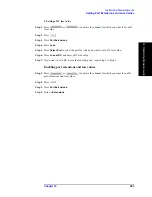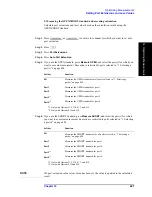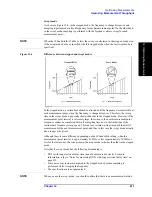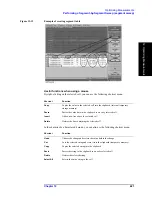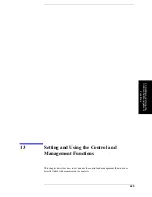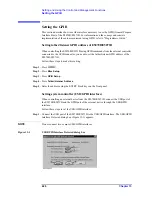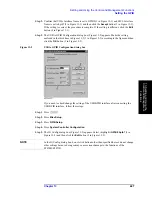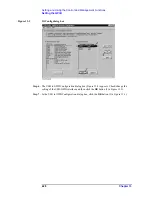
Chapter 12
415
Optimizing Measurements
Performing a Segment-by-Segment Sweep (segment sweep)
1
2
. O
pt
imiz
ing
M
e
as
ur
em
e
nt
s
Performing a Segment-by-Segment Sweep (segment sweep)
This section describes the concept of the segment sweep and how to perform it.
Concept of Segment Sweep
To perform a segment sweep, you must define two or more frequency ranges, called
segments, and then specify the number of points, IF bandwidth, power level, sweep mode,
sweep delay time, and sweep time for each segment. All segments are swept sequentially
as if swept in one sweep operation.
•
By skipping the frequency range, which does not need to be measured, you can sweep
and measure only the portions you need.
•
You can define the optimum measurement conditions for each of the segments you
designate. For example, you can specify as many points as possible in a segment
requiring high trace resolution and as few points as possible in a segment not requiring
high resolution. This shortens the measurement time, enabling you to optimize the
overall measurement throughput by not having to perform the entire operation under
the same measurement conditions of a particular frequency range.
To evaluate a band pass filter having the transmission characteristics shown in Figure 12-8,
for example, you can select the frequency ranges you need from A through G and
determine the measurement conditions shown in the Table . This enables you to measure
them simultaneously in one sweep operation.
Figure 12-8
Characteristics of a DUT on which a Segment Sweep is to be performed
Table 12-3
Frequency ranges (segments) from Figure 12-8 and their measurement
conditions
Start frequency
Stop frequency
Number of points
IF Bandwidth
Sweep mode
A
440 MHz
915 MHz
50
50 kHz
Stepped
B
915 MHz
980 MHz
130
70 kHz
Fast Stepped
C
980 MHz
1.035 GHz
60
50 kHz
Stepped
E
1.07 GHz
2 GHz
100
70 kHz
Fast Swept
G
2.6 GHz
3 GHz
40
70 kHz
Fast Swept
Summary of Contents for E5070B
Page 6: ......
Page 30: ...24 Contents ...
Page 34: ...28 Chapter1 Precautions Before contacting us ...
Page 286: ...280 Chapter6 Data Analysis Using the Equation Editor ...
Page 430: ...424 Chapter12 Optimizing Measurements Performing a Segment by Segment Sweep segment sweep ...
Page 538: ...532 Chapter15 Measurement Examples Executing Power Calibration ...
Page 634: ...628 AppendixB Troubleshooting Warning Message ...
Page 732: ...726 AppendixD Softkey Functions Trigger Menu ...
Page 740: ...734 AppendixE General Principles of Operation Data Processing ...
Page 760: ...754 AppendixF Replacing the 8753ES with the E5070B E5071B Comparing Functions ...



